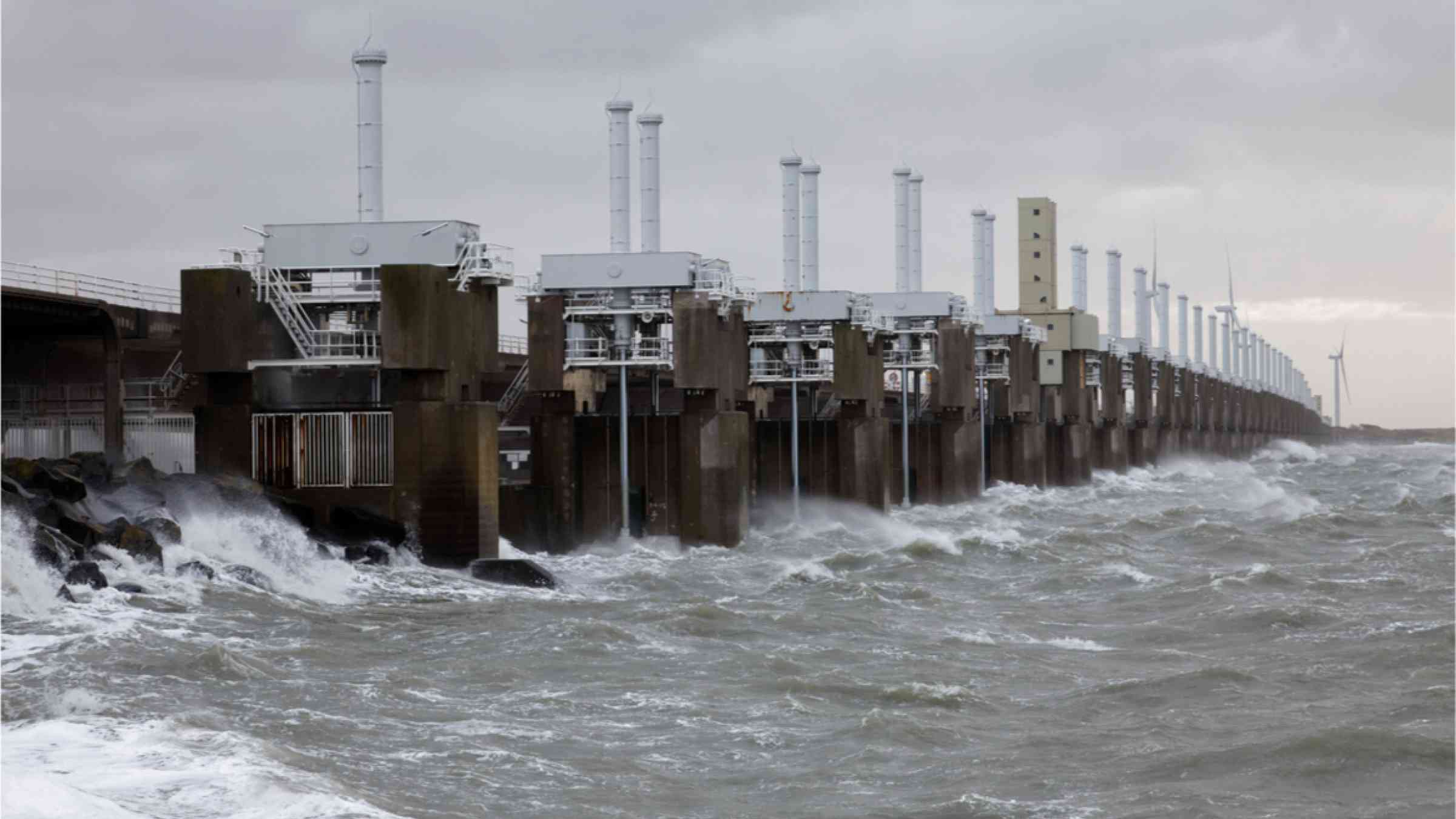The Netherlands can prepare even better for extreme weather: seven recommendations in response to the floods of July 2021

What if the extremely heavy rain in July 2021, with devastating consequences in Limburg, Belgium and Germany, had fallen elsewhere in the Netherlands? Deltares researchers studied this question recently in a three-day hackathon. The conclusion is that flooding cannot be prevented when there are such large-scale and extreme precipitation events. Nevertheless, with more resilient spatial planning and better preparation, the Netherlands can stop the disruption turning into a disaster.
It is clear that we must adapt to a climate that has already changed. Deltares recommendations include developing and performing stress tests on a supra-regional scale, improving forecasting and monitoring systems to deliver timely and adequate information, and limiting the consequences of extreme, large-scale precipitation through spatial planning.
July 2021 floods
In July 2021, an extremely large precipitation area above the Ardennes, the Eifel and South Limburg caused major flooding, as a result of which there was also extensive damage in the Netherlands. In the surrounding countries, the consequences were disastrous, with more than 220 fatalities, the destruction of villages and prolonged outages of essential systems such as electricity and transport.
Approach
For the purposes of the study, the Deltares researchers moved the meteorological situation of July 2021 to the north, positioning it above various parts of the Netherlands, and analysed the expected consequences. They found that, although such intense precipitation is exceptional, it is certainly possible again, and also in other locations in the Netherlands.
Study results
The July 2021 precipitation event was very extreme. If it had taken place more to the north, an area as large as half of the Netherlands would have had to cope with more than 110 mm of rain in 48 hours. The hackathon results show that if a precipitation area of this kind were to be located to the north and west, large-scale flooding would continue for more than a week and damage could amount to more than a billion euros. In the polder-drainage systems in the low-lying Netherlands, water would accumulate at surface level, and secondary dikes, pumping stations and dams would be strained to the limit. Crops would be lost, water could flood buildings, sections of road could be flooded and local power cuts could occur. In free-draining areas, the rainwater would accumulate in bottleneck locations such as low-lying areas or locations where streams have little room, resulting in inconvenience or flooding there. That actually happened in Valkenburg in July 2021. Water in streams and rivers such as the Overijsselse Vecht can rise to extremely high levels, overflowing quays and dikes and leading to failure.
Preventing a disaster
In terms of crisis management, a large weather system of this kind represents an enormous challenge that goes beyond the scope of the scenarios in place: multiple areas will be affected simultaneously and over a longer period of time. This would lead to problems with manpower, shortages of equipment such as emergency pumps and sandbags, and difficulties with the coordination of the response. Our country is not adequately prepared for flooding on such a large scale, which is expected to become more frequent as a result of climate change. It is impossible to prevent inconvenience as a consequence of such extreme events but it is possible to stop the disruption turning into a disaster.
Recommendations
To enhance the resilience of local areas and society in general, the following steps are recommended:
- The development and implementation of stress tests on a supra-regional scale, with an explicit focus on the duration of the nuisance, recovery and system behaviour;
- Improvements to forecasting and monitoring systems so that adequate information can be supplied in good time;
- The drafting or updating of location-specific action perspectives for water managers (emergency measures, suspension of pumping, emergency storage, changes to bottleneck locations etc.);
- The intensification of the cross-border exchange of risk information, including information about regional waters;
- The evaluation of crisis management capacity (preparation, response and post-hoc operations);
- The limitation of the consequences of extreme, large-scale precipitation through spatial planning: in exposed locations, building work should be adapted or banned, and extreme weather should be taken into account when building vital infrastructure;
- The raising of awareness among stakeholders of the risks of large-scale flooding and steps to develop location-specific action perspectives.
Follow-up
The results have been shared with the “Flooding and High Water” policy platform and the recommendations are being addressed in collaboration with the policy platform, water authorities, Rijkswaterstaat, the regional safety authorities and other stakeholders.